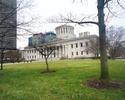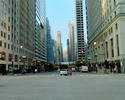Last year may be the last “normal” year in commuting (work trip travel and access) data. After decades of relative stability in the drive alone and transit market shares, it seems likely autos and transit will show large declines in 2020, both in market shares and actual numbers. During the pandemic, telework (working at home or telecommuting) has grown strongly, as people have significantly reduced their traveling physically to work. read more »
Demographics
U.S. Commuting 2019: The Last Normal Year
- Login to post comments
Will the Cultural Revolution be Canceled?
It’s an article of faith among many conservatives, and some liberals, that we’re being swept by a Maoist cultural revolution destined to transform American society into a woke collective. Yet before surrendering basics like equality of opportunity, social order, and free speech to leftist authoritarians, we should consider whether they’re the ones who will wind up getting canceled. read more »
- Login to post comments
The Coronavirus Reopened America's Wounds — and Poured Salt in Them
Yes, the coronavirus hit the president and his White House hard, likely because of the irresponsible choices this president has made, but let’s not kid ourselves: The virus has devastated with alarming efficiency minorities and the impoverished, particularly in cities, while accelerating our return to a more hierarchical and far le read more »
- Login to post comments
Efficiency and Effectiveness in Ohio Townships
For decades, political interests and academics have proposed measures to require consolidation of local governments under the assumption that “bigger-is-better,” and that larger governments are inherently more efficient. Often such initiatives equate efficiency with a smaller number of governments. The data indicates otherwise. read more »
- Login to post comments
Americans Won't Live in the Pod
“No Bourgeois, No Democracy”
– Barrington Moore
Protecting and fighting for the middle class regularly dominates rhetoric on the Right and Left. Yet activists on both sides now often seek to undermine single-family home ownership, the linchpin of middle-class aspiration. read more »
- Login to post comments
The Pre-Pandemic Rise of Working from Home (Telework) and Beyond
The 2019 market share data has just been released by the American Community Survey. Looking at driving alone and transit market shares, there has been virtually no change since 2010, with driving alone accounting for about three-quarters of commuting, while transit remains steady at 5%. The big news before Covid: the increase in people usually working from home (also referred to as telework or telecommuting) read more »
- Login to post comments
San Jose: Largest % Migration Loss Outside New Orleans
This article expands on the 2000 to 2019 state net domestic migration data from last week, covering the 110 metropolitan areas with more than 500,000 residents (Note). The big surprise may be that the largest proportional outflow of net domestic migrants, outside Hurricane Katrina ravaged New Orleans was San Jose, the nation’s most affluent metropolitan area and perhaps the wealthiest in the world. In both cases, many more people left in the first 10 years than since 2010. read more »
- Login to post comments
Dissecting Black Suburbia
By now, everyone who's paid attention to the Trump Administration lately knows that the suburbs, however defined, look to figure very prominently in the 2020 presidential election. read more »
- Login to post comments
Two Decades of Interstate Migration
America is still a mobile nation. Back in the 2000-2010 decade, 12.9 million people moved interstate, nearly five percent of the total population. In the 2010s the population has been a bit less mobile, with net domestic migration of 11.7 million residents, slightly under four percent. Nonetheless, 11.7 million is a large number. This is nearly equal to the population of Ohio, with only five states being larger read more »
- Login to post comments
Dwellings in Decline as Demographics Drive Demand
Rarely has the question of where, why and how people will live, work and play been so important, as the impact of COVID-19 begins to transform the demand and supply equation across the Australian property market. read more »
- Login to post comments






















